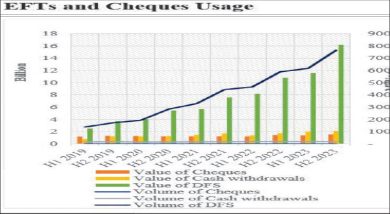High interest rates: where does the buck stop?

 Kondwani Kundawi, a salaried employee purchased a motor vehicle on loan about two years ago. Today, although he drives in the comfort of the car, his life is unbearable. He can hardly meet the fuel costs, maintenance and let alone his family’s basic needs.
Kondwani Kundawi, a salaried employee purchased a motor vehicle on loan about two years ago. Today, although he drives in the comfort of the car, his life is unbearable. He can hardly meet the fuel costs, maintenance and let alone his family’s basic needs.
Every month when he gets his pay check, he regrets having taken the loan then when interest rates were around 20 percent before rising to over 40 percent now.
The commercial bank that financed the purchase and still holds the car’s blue book deducts over a quarter of his gross salary apparently to juggle between period to complete the loan and amount to be.
Looking at his face when he tries to make sense from his loan statement, pain and regret are written all over it.
But who should Kundawi blame for the prohibitive interest rates, his bank or the government?
Blame it on RBM
The Reserve Bank of Malawi (RBM) implemented the infamous devaluation and floatation of the kwacha on May 7 2012. Based on the new exchange rate regime, the kwacha lost ground miserably to all main currencies and by December 2012, according to the RBM, the kwacha had retreated by over 100 percent against the dollar.
To arrest the runaway inflation which peaked at 37.9 percent in February 2013 and stabilise the local currency, in 2012 the bank rate saw a series of upward adjustments.
The RBM raised the bank rate, which is one of the determinants of commercial lending rates, from 13 percent to 16 percent in May 2012, then to 21 percent in July and 25 percent in December.
Along with the bank rate changes, according to the RBM, commercial banks also adjusted their saving and lending rates to an average eight percent and 45 percent, respectively—an interest rate spread of over 37 percentage points.
The RBM has since maintained the bank rate at 25 percent but introduced the Lombard facility at 27 percent effective January 2014. Consequently, commercial banks raised their lending rate to around 40 percent, arguing the new facility’s rate had effectively raised the bank rate.
Some banks are not spared
The high lending rates are not only a pain to borrowers. They are also poisoning the financial system.
According to the RBM, non-performing loans—loans that are defaulted or about to be defaulted—as a percentage of gross loans and leases increased to 13.6 percent in September 2013 from 6.5 percent in September 2012 presenting a significant threat to financial system stability.
The RBM cautions that despite a sound financial system, financial stability challenges remain, largely on account of exchange rate and inflation prospects.
And to add salt to the wound, some banks are facing capital adequacy challenges as they reported core capital ratios which were barely above the benchmarks of six percent. But the RBM points out that regardless of these, the banking sector is generally well capitalised.
Recently, the overall liquidity situation in the banking system improved, having struggled in 2012 after the drastic monetary policy changes.
But regardless of the improvement, the central bank says that some banks continue to have weak liquidity positions, posing risks to financial stability.
The International Monetary Fund (IMF) notes that to address liquidity pressures, some banks have resorted to high interest rates to attract deposits, and others have obtained emergency liquidity support from RBM.
Some commercial banks have introduced deposits rates up to 24 percent while others have rolled out different promotions.
Market structure, industry profits
Malawi has eleven commercial banks, a fairly competitive market on the face of it. But available data indicates otherwise.
According to available data in September 2013, National Bank of Malawi (NBM) and Standard Bank Limited continued to dominate the industry’s market share, as measured by their volume of total assets, deposits, gross loans and capital base.
In September 2013 the two banks held slightly more than half of the sector’s total assets and deposits with their combined assets and deposits accounting for 51.5 percent and 52.2 percent of the entire sector respectively.
And in 2012, the two banks’ combined assets constituted 49.7 percent of the industry’s aggregate, 52.8 percent of total capital, 50.3 percent of total deposits and 48.9 percent of total gross loans.
That is based on this composition, economic theory would classify the market as an oligopoly, a market of a few players—where prices, interest rates in this case would be sticky, not competitive or influenced by the few.
Further, it is noted that Malawi has a small and weak financial sector which lacks depth and is not inclusive with about 55 percent of Malawians having no access to financial services.
Malawi’s GDP grew at 1.9 percent in 2012 and is estimated to have grown by five percent in 2013.
But financial and insurance services are estimated to grow by 6.7 per cent in 2013, following a 6.3 per cent growth rate in 2012 having benefited from increased foreign exchange transactions and high interest rates, according to the RBM.
NBM, one of the largest banks’ net interest income almost tripled to K10.3 billion during the year ended June 2013 as compared to the corresponding period in 2012 according to the bank’s interim results.
The bank’s net interest income stood at K3.8 billion for the year ended June 2012 and rose to K9.9 billion by the end of the year.
NBM pretax profits also rose to K9.2 billion compared with K4.9 billion earned during a similar period in 2012. In 2012 the bank reported the bank reported a 110 percent increase in pretax profits to K11 billion.
Standard Bank, another leading bank which commands a significant part of the market,
in the half year ended June 2012 saw its profits increasing by 54 percent to K4.3 billion from K1.6 billion in 2011.
In the year ended December 2012, the bank grew its profits by 125 percent to K7.9 billion from K3.5 the year before.
Wide interest spreads, solutions
Data provided by the RBM indicate that in August 2013 the base lending rate for commercial banks stood at 38 percent while the savings rate was as low as 10 percent—a spread of about 28 percent.
Commentators have noted that Malawi has the highest spread between savings and base lending rates in the region which averages seven percent according to the Centre for
Affordable Housing in Africa. The centre blames the high interest rate spread in Malawi on high overheads.
Recently, Chancellor College professor of economics Ben Kalua bemoaned the wide spread arguing it is one of the highest in the world. He argued that with low savings rates it is difficult to mobilise savings while the high lending rates deter borrowing.
Another expert Henry Kachaje argued that the low savings rate provide no motivation to save. Kachaje however argued that banks view Malawians as risky borrowers.
But even before the May 2012 when policy changes that prompted the high lending rates the financial sector indicators showed a well capitalised and profitable banking system with low non-performing loans, the spreads remained high.
But with such an interest rate spread can we say the RBM is the only culprit or the buck stops with the market?
According to an International Monetary Fund (IMF) working paper by Calixte Ahokpossi on determinants of bank interest rates in sub-Sahara Africa (SSA) market concentration is positively associated with interest margins, but the impact depends on the level of efficiency of each bank.
The paper which examines the determinants of bank interest margins using a sample of 456 banks in 41 SSA countries argues that in particular, efficient banks increase their margins more in concentrated markets. This he argues that indicates that policies that promote competition and reduce market concentration would help lower interest margins.
The paper adds that the results also show that bank-specific factors such as credit risk, liquidity risk, and bank equity are important determinants of interest margins but are also sensitive to inflation, but not to economic growth or public or foreign ownership.





